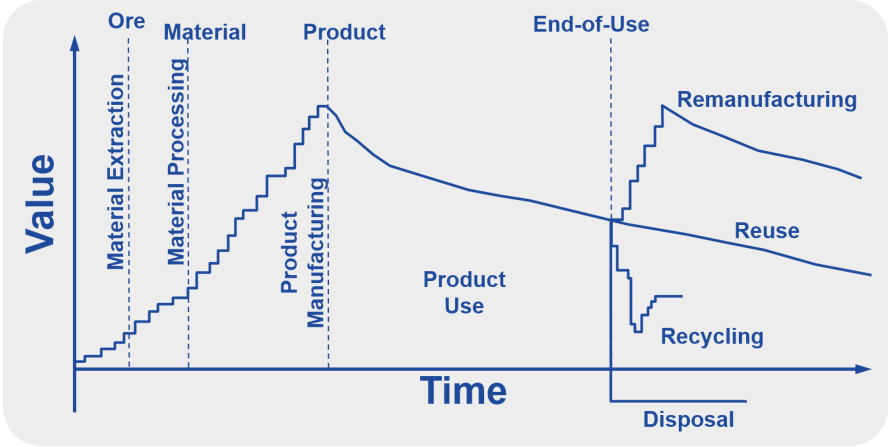Circular Materials Economy
The industrial revolution of the 1800s and the advent of mass production clearly marked a turning point in the history of humankind. Rising consumer demand has called for increasing production volumes of goods, which in turn has led to innovations that have enabled the manufacture of products quickly and cost-effectively. Although this has resulted in a better quality of life for large sections of humanity, large-scale manufacturing has also resulted in irreversible damage to the environment and depletion of natural resources.
One way to address this problem would be to change our consumption patterns. That is, move from a traditional “take, make and dispose” narrative to a manufacturing and consumption model that reduces our dependence on natural resources and minimizing waste by keeping materials in continuous use, or in other words, through a circular economy. Theoretically, a shift from a linear to a circular economy can address the three pillars of sustainability, that is, environmental, economic and social, due to its inherently regenerative characteristics, namely recovery, reuse, remanufacturing and recycling. Thus, the circular economy model aims to very closely mirror naturally occurring systems that are long lasting and effectively balance resilience, efficiency and risk.

